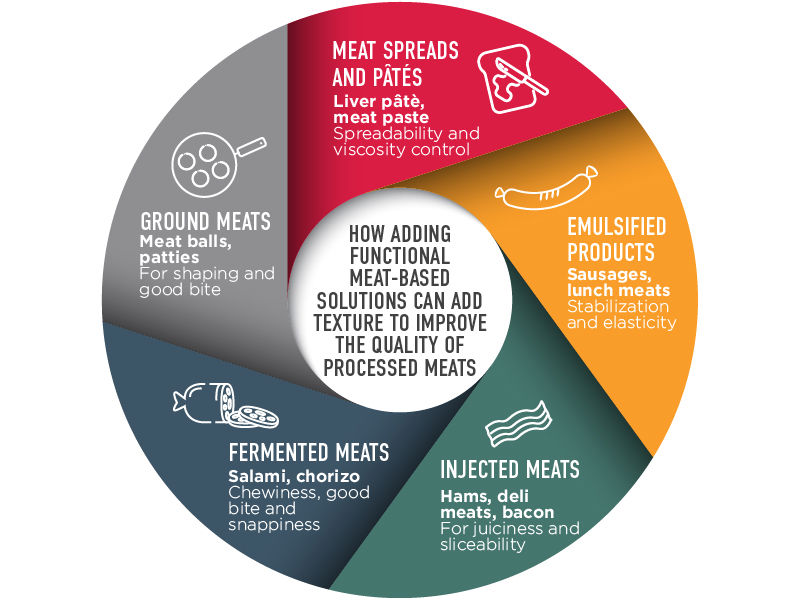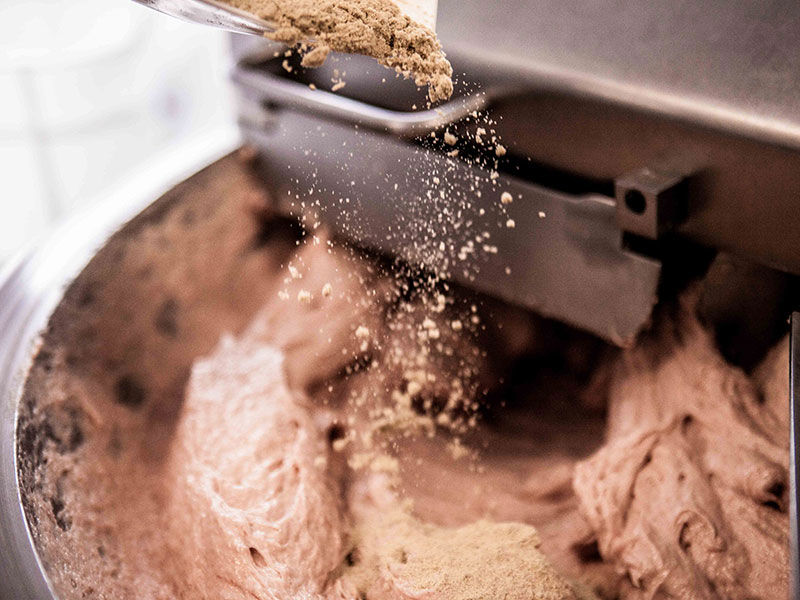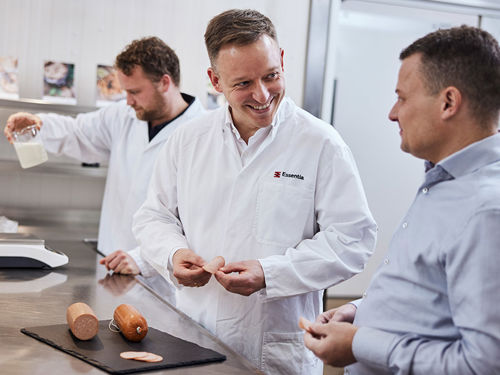Texture, or mouthfeel is literally how food feels in the mouth as it is consumed. This could be varying sensations having to do with juiciness, crispiness, smoothness, cohesiveness, elasticity, viscosity, graininess, and fattiness, just to name a few.
Food texture is a key sensory attribute of foods and beverages— it ranks right up there with taste, cost, and convenience, though it is not often given the credit it deserves. Not only does texture have a casting vote over a food’s acceptability, but it is also essential in identifying it.
Texture can have several effects on the taste of food. The viscosity of some foods is essential for the release of the flavor notes. Crispy foods have fattier or saltier notes, which consumers are accustomed to having as the standard of quality. This explains why crunchy means freshness in raw fruit and vegetables, and mushy or soggy savory foods are considered unpleasant.
The importance of good texture
When meats are ground and processed, the taste of the food changes—liquids may be added during preparation, which may then dilute or mask the flavor of the food; seasonings may be added to ensure the food is moist but may also change the flavor of the food. Processes such as meat extension can also reduce the natural structural integrity in processed meats. Once texture has been modified, taste becomes a very important sense used to identify the food. Enhancing the natural flavor of the food may help with food recognition, but it is with the reconstruction of texture that enjoyment can be achieved.
For the consumer and meat producers
With regards to the eating experience, bite and meaty texture are expected in almost all meat products. When tasting a sausage for example, it would be a disappointing endeavor if the meat was mushy with no bite to it. Snappiness in sausage casing is essential, and so is the cohesiveness of the contents.
Texture directly influences the amount consumed, for the consumers to receive their nutritional requirements.
When it comes to the industrial implications, sliceability is the main benefit of having firm textures processed products. Manufacturers who can efficiently portion and package their meats and cold cuts have a better chance of gaining popularity when under the scrutiny of shoppers. Better slicing ability reduces the amount of waste, therefore increasing the yield and benefiting the bottom line.
Adding functional proteins improves

Functional meat-based solutions when mixed in or injected into meats can provide numerous value-adding benefits. Some proteins perform better in chilled products, while others perform even when heated. The functional properties utilized depend entirely on the manufacturer’s needs, and can be applied according to the functionality that is necessary:
- Functional plasma protein has irreversible gelling capabilities and is thus ideal for meat products that need to be heated during preparation. The plasma will stay firm, and texture will be maintained, providing a pleasing appearance and more than satisfactory eating experience.
- Functional collagen-based proteins are thermally reversible and will thus unfold during heating. They are particularly suitable for use in chilled and deli meats such as cold cuts, salamis, charcuterie, reformed hams, etc. Collagen-based proteins are suitable for use in various types of sausages.
- Mixing of the above creates functional ingredients with ideal properties for certain meat applications where heat tolerance as well as thermal reversibility are essential.
Functional meat-based proteins are 100 % clean label solutions that enable manufacturers to get the best out of their raw materials while minimizing waste, thus promoting sustainability. They make economic sense since sliceability improves yield, and consequently the profit margins. The sensory benefits enjoyed in more consistent meats are also noticed by consumers who will appreciate the quality product.
Watch an in-depth examination of the vital role texture plays in processed meats as applications expert Carsten Doktor explains the advantages of using meat-based protein solutions in various processed meat products.
Co-create with knowledgeable experts in Essentia’s innovation centers, to find out how 100 % natural clean label ingredients can elevate your brand. Get in touch to find out options for cleaning up your recipe and be part of the movement towards reducing or in some cases completely removing phosphates from your products. The applications division will work with you to explore the optimal custom solutions that suit your needs, to help find the desired texture and consistency for your products. Learn more by contacting a representative near you.




